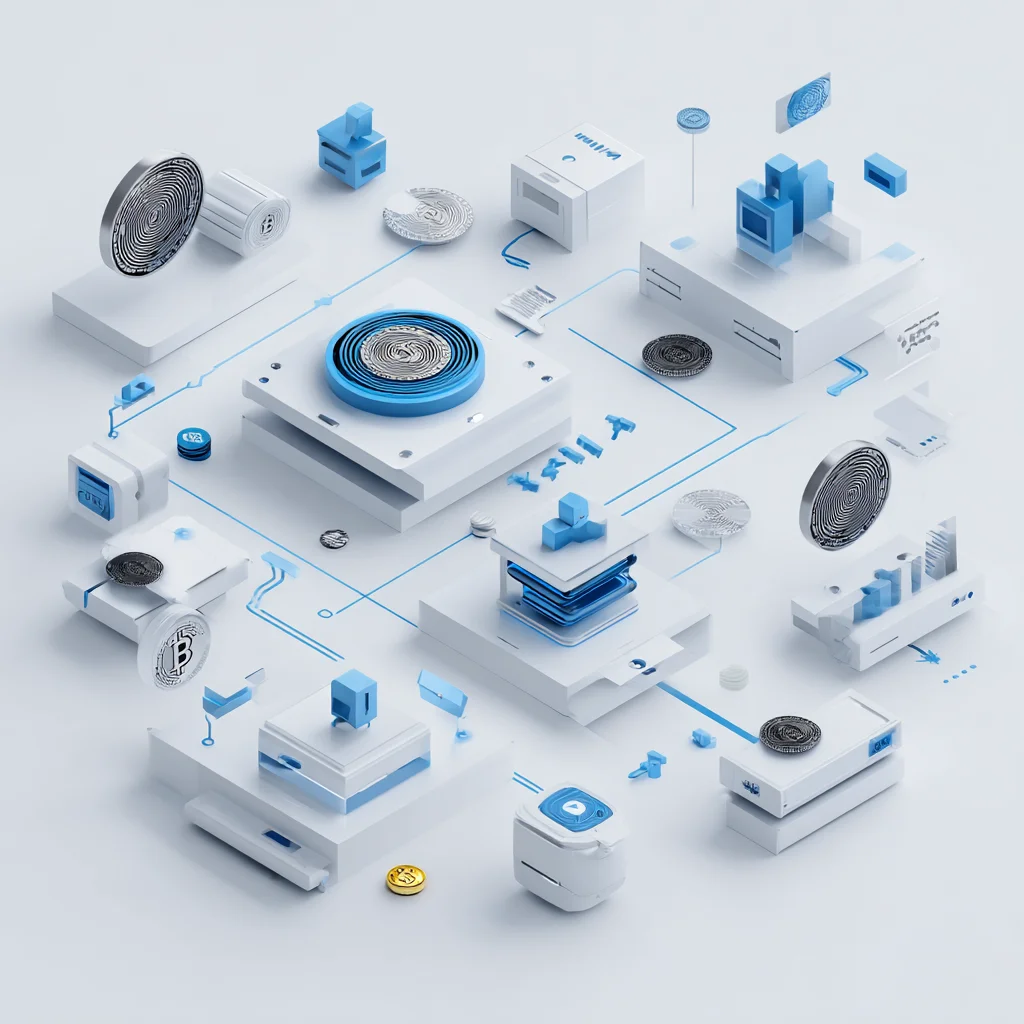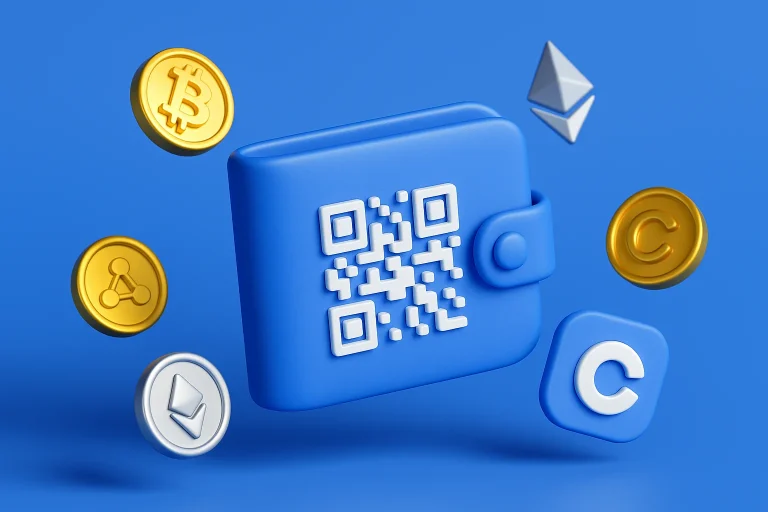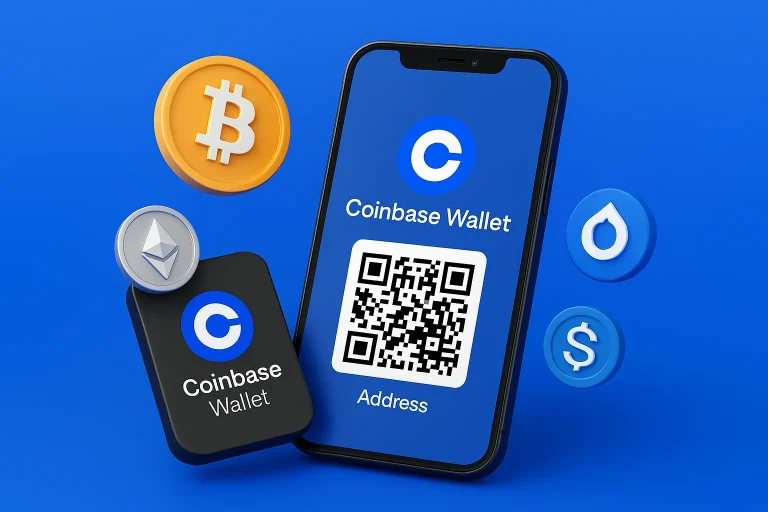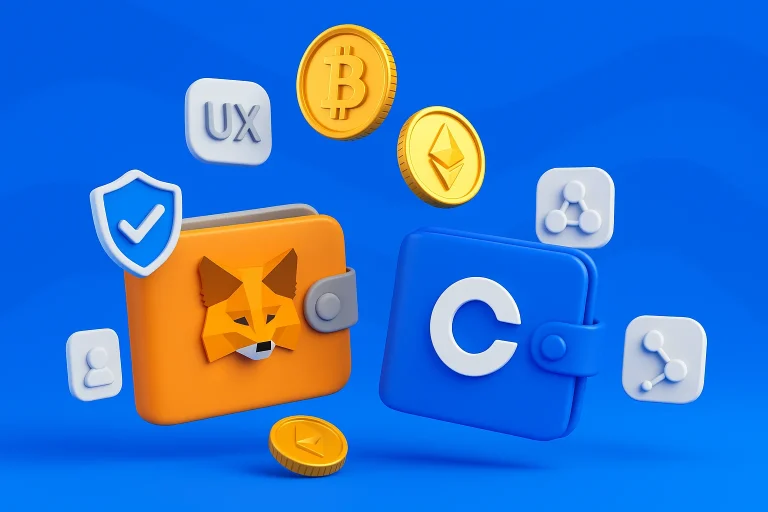Centralized exchanges (CEXs) often require personal data, complete KYC verification, and control over your funds. In contrast, decentralized exchanges (DEXs) let you trade directly from your crypto wallet, with no middlemen, no account freezes, and no unnecessary friction.
If you want to swap crypto fast, access new tokens, or retain full ownership of your assets, DEXs offer a secure, non-custodial alternative. This beginner-friendly guide explains a DEX, how it works, and how to start trading.
Table of contents
- What Is a Decentralized Exchange (DEX)?
- What Can You Do with a Decentralized Exchange?
- The Most Popular DEXs
- How to Set Up a Crypto Wallet for DEX Use: Step-by-Step Guide
- How to Connect Your Crypto Wallet to a DEX: Step-by-Step Guide
- How to Use a DEX to Swap Tokens: Step-by-Step Guide
- How to Use a DEX to Send Crypto (To the DEX or Another Wallet): Step-by-Step Guide
- How to Use a DEX to Buy Crypto Directly on It: Step-by-Step Guide
- How to Provide Liquidity to a DEX: Step-by-Step Guide
- FAQ
- Final Thoughts
What Is a Decentralized Exchange (DEX)?
A DEX (Decentralized Exchange) is a blockchain-based platform that allows users to trade cryptocurrencies peer-to-peer, without a central authority. You retain complete control of your private keys and never have to deposit funds into an exchange wallet.
Instead of centralized order books, DEXs use smart contracts to automate trades directly on the blockchain. This reduces the risk of hacks, custodial errors, or frozen assets.
DEXs typically support a wide range of crypto tokens, including new and emerging assets not on centralized platforms. Their permissionless and transparent nature appeals to users who value privacy, autonomy, and self-custody.
How a DEX Works
DEXs use the Automated Market Maker (AMM) model, liquidity pools, and smart contracts.
Liquidity Pools
Users known as liquidity providers (LPs) deposit two tokens into a pool (e.g., ETH/USDC). These pools power the token swaps, and LPs earn a share of the trading fees.
Token Swaps
When you swap tokens on a DEX, a smart contract automatically handles the transaction, executes the trade, updates the pool, and returns the new tokens to your wallet. Thus, ensures trustless, immutable transactions.
Fees
DEX users pay:
- Network fees (e.g., gas fees on Ethereum)
- Swap fees, which are distributed to LPs and protocol treasuries
These fees go to the ecosystem, not a centralized entity.
Wallet-Based Access
DEXs are non-custodial. You connect using a crypto wallet (e.g., MetaMask), which holds your funds and private keys. There are no email signups or password resets.
No KYC Required
Most DEXs do not require KYC, allowing anonymous access to global crypto markets. However, always do your research when trading new or low-liquidity tokens.
What Can You Do with a Decentralized Exchange?
Here’s what users can do on most DEX platforms:
- Swap tokens instantly without third-party approval;
- Trade from a non-custodial crypto wallet (full control, no custodians);
- Buy crypto on decentralized exchanges with supported token pairs;
- Access new tokens and trading pairs often before CEX listings;
- Provide liquidity to pools and earn a share of trading fees;
- Schedule crypto trades on DEXes using advanced dApps and tools;
- Track real-time token prices and slippage across DEX platforms;
- Participate in yield farming and DeFi staking;
- Maintain privacy with no KYC required on most platforms.
The Most Popular DEXs
Here are five of the most widely used DEX platforms today:
- Uniswap (built on the Ethereum blockchain);
- PancakeSwap (operates on Binance Smart Chain);
- SushiSwap;
- Curve Finance;
- 1inch.
To help users understand how to navigate a decentralized exchange and use its full range of features, we’ll break down each action listed above using Uniswap as the main example.
While the layout and token options might vary slightly, the core trading process remains almost identical across most DEXs.
How to Set Up a Crypto Wallet for DEX Use: Step-by-Step Guide
Before trading crypto on a decentralized exchange (DEX) like Uniswap or PancakeSwap, you’ll need a non-custodial wallet that supports Ethereum and other blockchain assets. This guide walks you through using decentralized wallets to connect and trade on DEXs safely and efficiently.
Step 1. Choose a Wallet
To use decentralized exchanges, pick a wallet that supports ERC-20 tokens and Web3 functionality. Popular options include:
- MetaMask (best for Ethereum DEXs like Uniswap);
- Coinbase Wallet;
- Brave Wallet;
- Phantom (for Solana-based DEXs);
- Uniswap Wallet;
- WalletConnect (used to connect many mobile wallets to DEXs).
We’ll use MetaMask in this example, as it works across browsers and mobile, supports most major DEX platforms, and is beginner-friendly.
Step 2. Install the Wallet App or Extension
For Desktop:
- Visit the official MetaMask site;
- Download the extension for Chrome, Brave, Firefox, or Edge.
For Mobile:
- Go to the App Store (iOS) or Google Play (Android);
- Search for and install the MetaMask app.
Important: Only download wallets from official sources to avoid phishing attacks or fake apps.
Step 3. Create Your Wallet
- Open the app and click “Create a Wallet”;
- Set a strong password;
- Write down your 12-word secret recovery phrase;
- Store it offline (not in cloud storage or screenshots).
You cannot recover your wallet or funds if you lose your recovery phrase. You are your bank.
Step 4. Fund Your Wallet
You’ll need ETH (or the native token of your target DEX chain) to pay gas fees and start trading. There are 3 common ways to add crypto:
- Buy ETH directly in MetaMask using a card or payment service;
- Send crypto from a centralized exchange (e.g., Binance, Coinbase);
- Receive funds from another wallet.
Even a small amount is enough to begin exploring how to trade on a decentralized exchange.
How to Connect Your Crypto Wallet to a DEX: Step-by-Step Guide
Connecting your crypto wallet to a decentralized exchange is the first step to start trading crypto on decentralized exchanges like Uniswap or SushiSwap. Follow these simple steps to link your wallet and begin swapping tokens securely.
Step 1. Open the DEX and Click “Connect”
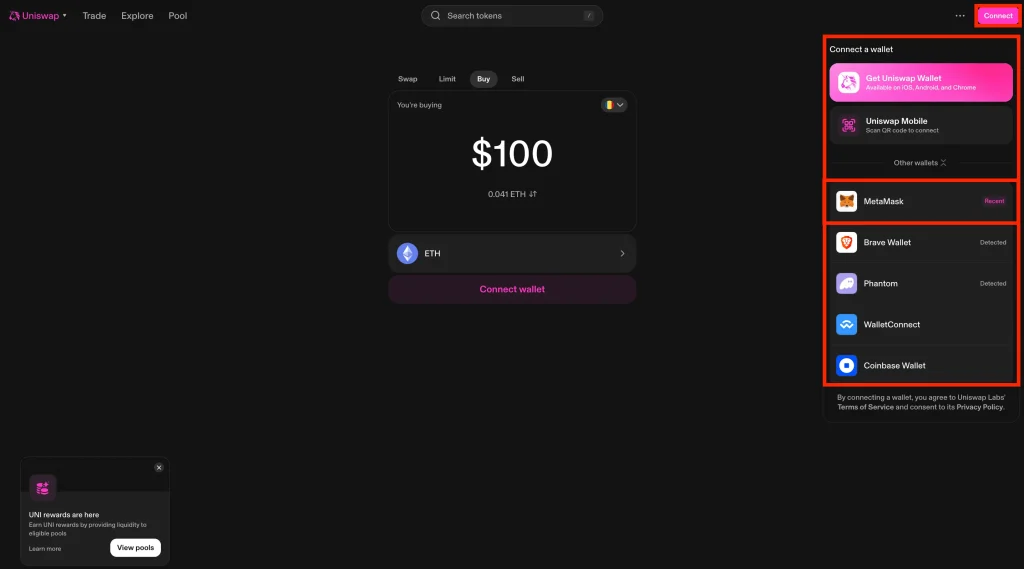
- Visit the official DEX website (always verify the URL to avoid scams).
- Click “Launch App” or open the trading interface.
- Locate and click the “Connect” or “Connect Wallet” button, usually at the top right corner.
- Select your wallet from the supported options, such as MetaMask, WalletConnect, Coinbase Wallet, or others.
Step 2. Approve the Connection in Your Wallet
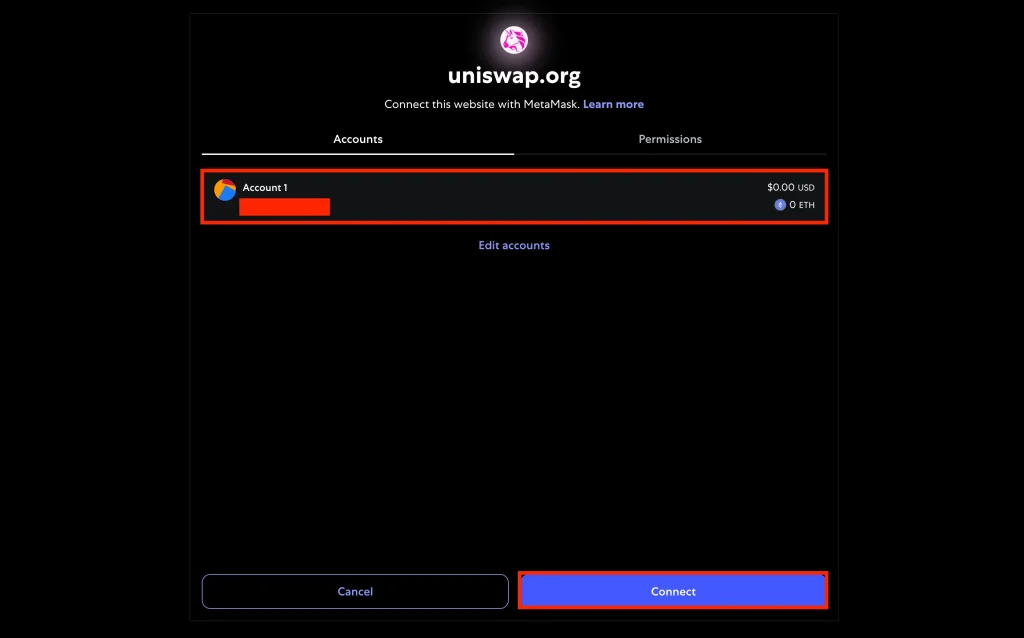
- Your wallet will prompt a pop-up or extension window to open.
- Choose the wallet account you want to connect.
- Approve the connection request.
- Remember, the DEX never takes custody of your funds. It only gains permission to interact with your wallet for swaps, trades, or liquidity provision.
- Once connected, you can trade crypto on the DEX, swap tokens, or provide liquidity directly from your wallet.
Now you can safely connect your crypto wallet to a decentralized exchange, unlocking the power to trade, swap, and manage your digital assets on your terms.
How to Use a DEX to Swap Tokens: Step-by-Step Guide
Step 1. Go to the “Swap” Tab and Select Your Tokens
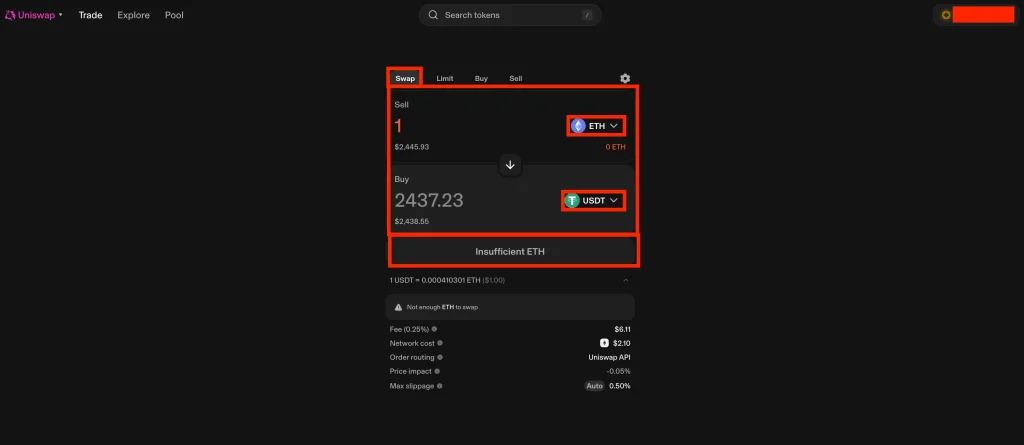
After connecting your wallet, open the Swap tab on the DEX. Choose the token you want to trade, enter the amount, and then select the token you wish to receive. You’ll see real-time info, including exchange rates, transaction fees, price impact, and minimums received after slippage.
All swaps happen through liquidity pools powered by liquidity providers. The more liquidity, the better the exchange. When the numbers look good, click the Swap button.
Step 2. Confirm the Swap and Approve the Transaction
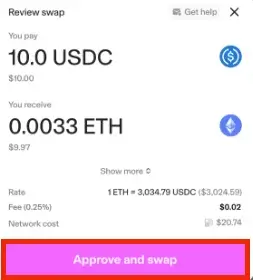
You’ll get a breakdown showing the tokens, rate, gas fees, slippage, and routing details.
Click Confirm Swap, then approve the transaction in your wallet. If it’s your first time using a specific token, you’ll need to approve it first so the smart contract can access it. After that, sign the final confirmation.
Once the transaction is confirmed on-chain, the tokens land in your wallet.
How to Use a DEX to Send Crypto (To the DEX or Another Wallet): Step-by-Step Guide
Step 1. Open the “Send” Tab and Fill Out the Details
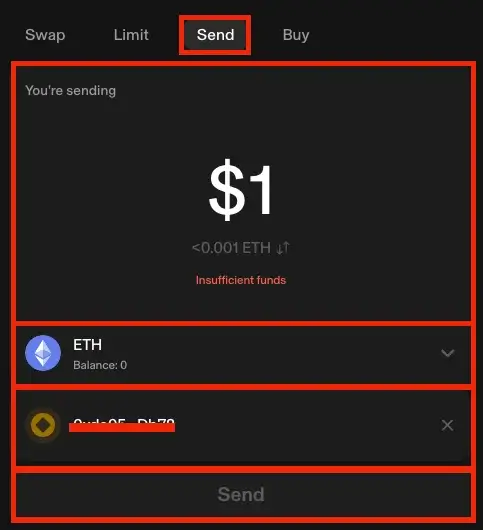
Connect your wallet to the DEX and go to the Send tab. Choose the token, enter the amount, and paste the recipient’s address or ENS name. If you’re sending to the DEX for trading or liquidity pools, use your connected wallet address to fund your activity. If you send it to someone else, ensure their wallet supports the token and that it is on the Ethereum blockchain. Mistakes here can mean permanent loss of funds.
Step 2. Confirm and Send
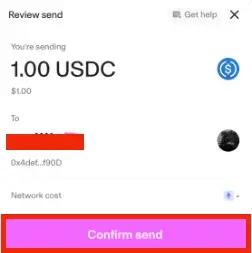
Review all details (token type, amount, destination, and estimated transaction fees). Click Confirm Send, then approve the transaction in your wallet. Once submitted, the funds are processed on-chain and delivered to the target address. There are no intermediaries involved.
How to Use a DEX to Buy Crypto Directly on It: Step-by-Step Guide
Step 1. Open the “Buy” Tab and Enter Purchase Details
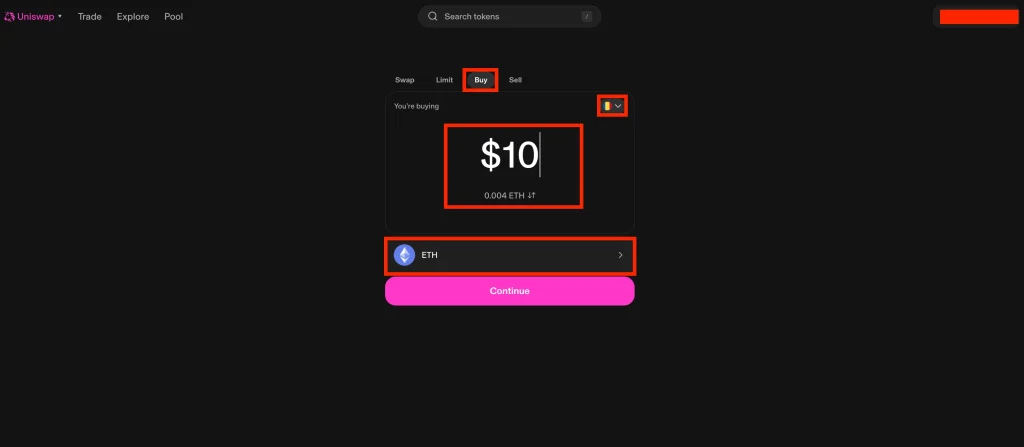
Once your wallet is connected to the DEX interface, click the Buy tab at the top. Select your region, choose the digital asset you want (usually ETH, but other tokens may be available), enter the amount, and hit Continue.
Step 2. Choose a Provider and Complete the Transaction
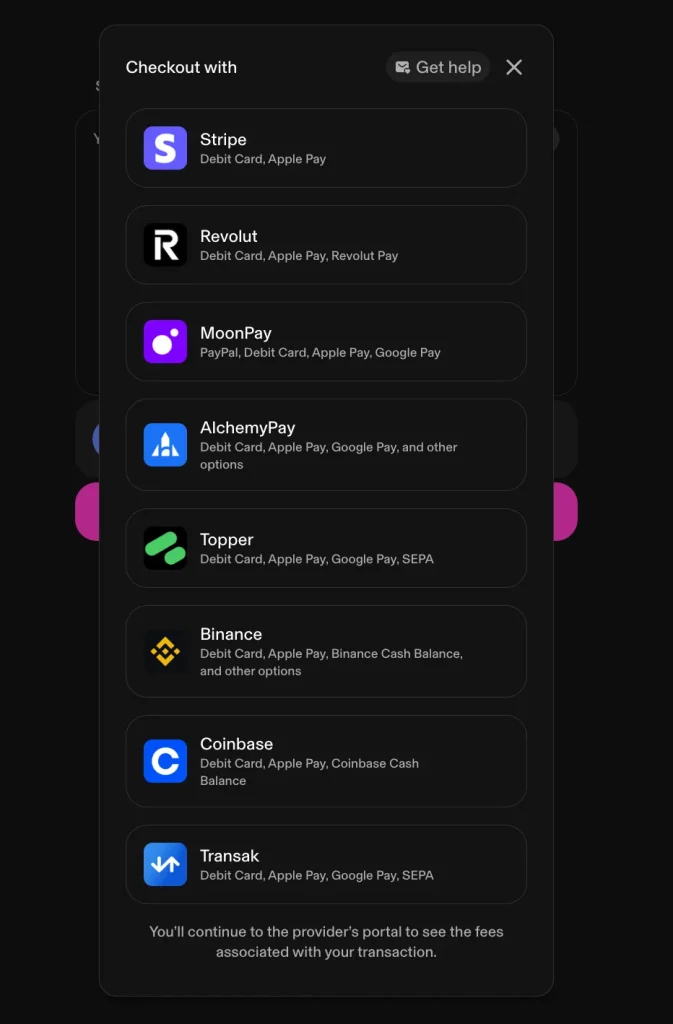
The DEX will show a list of available fiat on-ramp providers based on your location. These might include Coinbase Pay, MoonPay, Revolut, Stripe, Transak, etc. Choose a provider, and you’ll be redirected to their secure site to complete the payment.
Depending on the provider, you may need to verify your email or phone number or upload an ID. Some level of KYC is usually required when you buy crypto with fiat.
Once the transaction is complete, your newly bought assets will land directly in your connected wallet, ready to swap, trade, or deposit into liquidity pools.
How to Provide Liquidity to a DEX: Step-by-Step Guide
Step 1. Go to the “Pool” Tab, Press “Create Position”, and Select Your Tokens
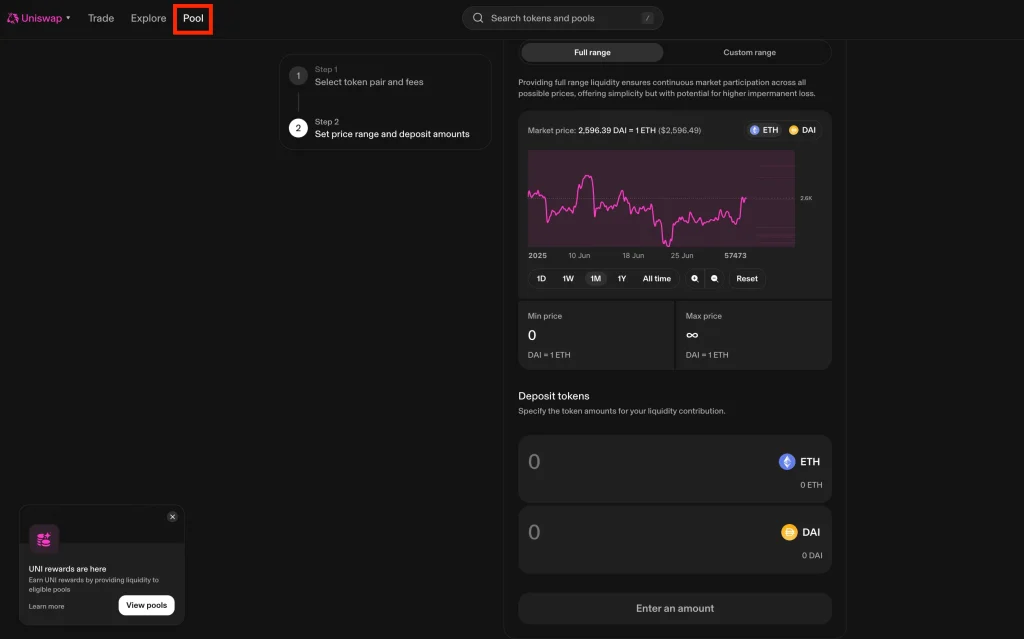
With your wallet connected, head to the Pool section on the DEX. Choose the two tokens you want to deposit (creating a trading pair), and enter how much you’ll contribute. The system will automatically balance the ratio based on current exchange rates. You’ll also see your share of the liquidity pool, projected earnings from trading fees, and the current pool size.
Step 2. Approve and Confirm Your Deposit
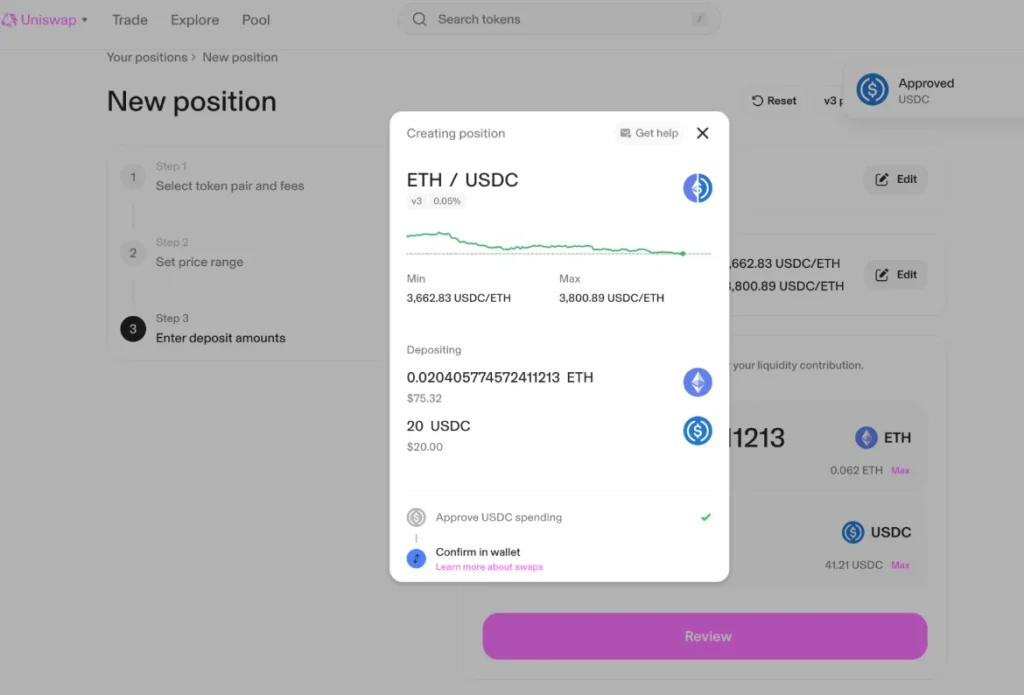
Approve both tokens in your wallet if you haven’t already done so. Then, confirm the transaction to provide liquidity. The DEX will issue LP tokens (liquidity provider tokens) representing your pool share. As users swap tokens, you’ll earn a cut of the fees based on your contribution. You can withdraw your funds at any time by removing your liquidity.
FAQ
What are the Benefits and Drawbacks of Using a DEX?
DEXs offer lower fees, faster access, and full asset control without a centralized intermediary. They operate within the broader cryptocurrency ecosystem, letting users trade peer-to-peer fiat, tokens, or stablecoins. Plus, DEX features like wallet-based logins and smart contract automation enable users to stay anonymous and maintain control of their funds. Conversely, market liquidity can vary, especially for lesser-known tokens. Also, most DEXs don’t offer support or recovery if mistakes are made; you’re alone.
How to Access the DEX Infrastructure?
You only need a supported crypto wallet and internet access to tap into the decentralized finance infrastructure. Most DEXs provide web-based platforms that connect directly to wallets like MetaMask or WalletConnect. Once connected, you can start trading, adding liquidity, or exploring financial products without a central authority. Many DEXs offer beginner-friendly and mobile-compatible interfaces, making it easier to join the cryptocurrency ecosystem instantly.
What Is a Gas Fee, and How Is It Calculated?
A gas fee is the payment required to perform a transaction or execute a smart contract on a blockchain like Ethereum. It’s calculated based on network congestion (supply and demand) and the complexity of the action. The more users interact with the network, the higher the fees are. DEXs often operate on Layer 1 chains where gas can spike during heavy trade volume, so keep an eye on fee estimators before submitting a transaction.
How to Schedule Crypto Trades on DEXes?
While traditional DEX interfaces don’t offer native scheduling, some third-party tools and smart contract services allow you to automate and schedule trades. These tools integrate with DEXs and help users execute a trade when certain conditions are met, like price targets or time windows. This is useful for managing entries in volatile market liquidity conditions without being online 24/7.
Can I Trade All Cryptocurrency on a DEX?
Not all cryptocurrencies are available on every DEX. Availability depends on what trading pairs exist and whether liquidity is present. While DEXs support various tokens, especially on chains like Ethereum or Binance Smart Chain, some coins (especially those not wrapped or supported on a given chain) may only be tradable on centralized exchanges. Always do your research to confirm availability.
What Is Slippage, and How Can I Avoid It?
Slippage happens when your trade executes at a different price than expected, usually due to low market liquidity or rapid trade volume changes. To reduce it, only trade during stable network activity, set a slippage tolerance that fits your risk level, and choose DEXs that provide deeper liquidity pools. Using smaller trades or splitting large ones can also help minimize impact.
Is It Safe to Use a DEX?
Most DEXs are built on open-source blockchain technology and powered by smart contracts, which minimizes reliance on a central authority. They allow users to always maintain control of their wallets and assets. However, risks include human error, interaction with malicious clones, or vulnerabilities in contract code. Stick with popular DEXs offering audits, strong community trust, and consistent financial uptime.
Final Thoughts
Now you know how to use a decentralized exchange, from connecting your wallet to swapping tokens, trading fiat, and providing liquidity.
Whether you’re here for quick trades or exploring deeper DeFi strategies, DEXs put you in the driver’s seat. Just stay alert, double-check every step, and enjoy the freedom of trading on your terms.

